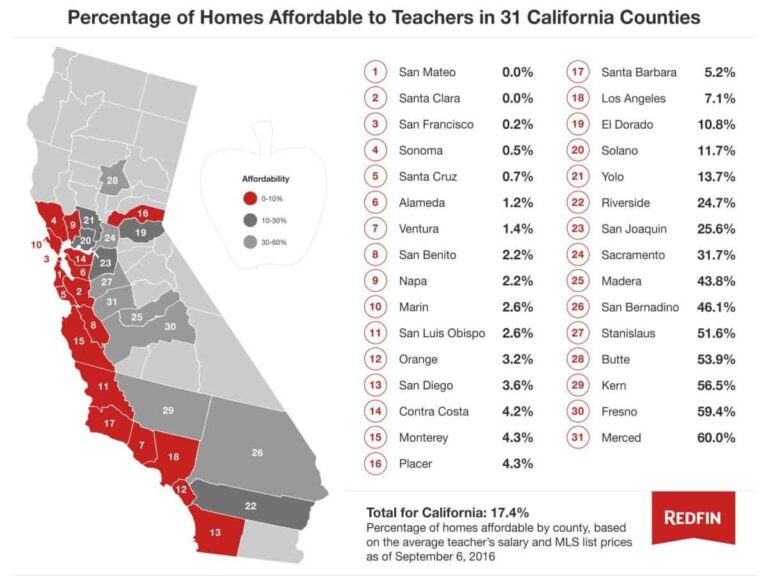Despite offering some of the highest teacher salaries in the nation, California continues to face significant challenges in retaining and recruiting educators. A recent Axios report highlights that even with increased pay, many teachers in the state struggle with the high cost of living, burnout, and mounting classroom demands. This paradox raises pressing questions about the effectiveness of salary boosts alone in addressing the ongoing teacher shortage and ensuring quality education for California’s students.
California’s Teacher Salaries Lead the Nation but Struggle to Retain Educators
Despite topping the charts with an average annual salary exceeding $85,000, California faces a paradoxical challenge in maintaining a stable teaching workforce. Educators cite mounting classroom pressures, soaring living costs, and limited career advancement as key factors prompting many to leave the profession. These issues persist even as districts allocate significant budgets to compensation, highlighting that competitive pay alone cannot address retention woes.
Recent data reveal a trend where nearly 20% of new teachers exit within the first five years‚ÄĒa rate well above the national average. Districts have initiated programs such as mentorship, flexible scheduling, and mental health support, but many argue systemic obstacles remain unaddressed. Below is a snapshot of the primary factors influencing California’s teacher retention struggles:
- Cost of Living: Housing prices continuing to outpace salaries.
- Workload: Increased class sizes and administrative duties.
- Student Needs: Growth in special education and language support demands.
- Career Pathways: Limited opportunities for professional growth.
| Metric | California | National Avg. |
|---|---|---|
| Average Teacher Salary | $85,200 | $65,700 |
| Teacher Attrition Rate (5 yrs) | 20% | 13% |
| Median Home Price | $760,000 | $320,000 |
| Student-to-Teacher Ratio | 24:1 | 16:1 |
Cost of Living Undermines the Impact of High Pay in California Schools
Despite California boasting some of the highest teacher salaries in the nation, many educators find themselves struggling to keep up with the state’s soaring living expenses. Housing costs alone consume a significant share of monthly paychecks, leaving little room for savings or discretionary spending. The paradox highlights a growing concern: high nominal salaries do not always translate to financial comfort or stability for school staff.
- Median home prices exceed $800,000 in many school districts.
- Renting a modest apartment often costs upwards of 30% of a teacher’s salary.
- Daily expenses such as transportation, childcare, and healthcare further strain budgets.
This financial squeeze has broader implications, including challenges in teacher retention and recruitment. Many educators are forced to commute long distances or seek second jobs to bridge the gap between earnings and expenses, diverting focus from their core mission‚ÄĒeducating students. Efforts to boost pay without parallel reforms in cost-of-living support may fall short in resolving these underlying issues.
| Category | Monthly Cost | Percentage of Average Teacher Salary* |
|---|---|---|
| Rent (1-bedroom) | $2,500 | 35% |
| Transportation | $300 | 4% |
| Childcare | $1,200 | 17% |
| Healthcare | $400 | 6% |
*Based on an average monthly teacher salary of $7,000.
Addressing Burnout and Workload Could Enhance Teacher Retention Beyond Salary Increases
While California boasts some of the highest teacher salaries in the nation, many educators report that financial incentives alone fail to curb the ongoing exodus from the profession. Increasingly, experts and school administrators are pointing to the urgent need for systemic changes that alleviate the chronic stress and overwhelming workloads plaguing teachers. High caseloads, excessive administrative duties, and insufficient planning time are significant contributing factors that erode job satisfaction and push educators toward burnout.
Addressing these issues may require innovative policy and school-level initiatives focused on sustainable work environments. Key strategies include:
- Reducing class sizes to allow for more individualized attention and manageable workloads.
- Delegating non-teaching tasks like paperwork and monitoring to support staff.
- Increasing access to mental health resources and professional development emphasizing self-care.
- Implementing flexible scheduling or job-sharing arrangements to better balance responsibilities.
| Factor | Impact on Retention | Possible Intervention |
|---|---|---|
| Classroom Overcrowding | High stress, lower engagement | Smaller class sizes |
| Administrative Burden | Decreased teaching time | Hire clerical support |
| Emotional Exhaustion | Increased absenteeism | Access to counseling |
Policy Proposals Focus on Comprehensive Support Systems to Strengthen the Teaching Workforce
Amid California’s efforts to attract and retain quality educators through some of the highest teacher salaries in the nation, policymakers recognize that pay hikes alone are insufficient to address deep-rooted challenges. New proposals emphasize a holistic approach, aiming to build robust support networks that extend beyond financial incentives. These plans include enhanced mentoring programs, targeted professional development, and mental health resources designed to sustain educators throughout their careers, particularly in underserved communities.
Key components of the proposed support systems include:
- Comprehensive induction programs for early-career teachers to reduce burnout and improve retention
- Expanded access to counseling and wellness services to address stress and workload pressures
- Collaborative professional learning communities encouraging shared best practices
- Flexible career pathways allowing teachers to grow without leaving the classroom
| Support Element | Projected Impact | Implementation Timeline |
|---|---|---|
| Mentorship Expansion | 25% reduction in first-year attrition | 2024-2025 school year |
| Mental Health Resources | Improved teacher well-being metrics | Ongoing from 2024 |
| Professional Learning Communities | Enhanced instructional quality | Phase-in 2025-2026 |
The Conclusion
Despite California’s ranking among the highest in teacher salaries nationwide, the persistent challenges of rising living costs, housing affordability, and workload pressures continue to undermine recruitment and retention efforts. As educators grapple with financial and professional hurdles, policymakers face mounting pressure to explore comprehensive solutions beyond pay raises to sustain a robust and committed teaching workforce. The ongoing debate underscores the complexity of addressing teacher shortages in one of the country’s most expensive states.







